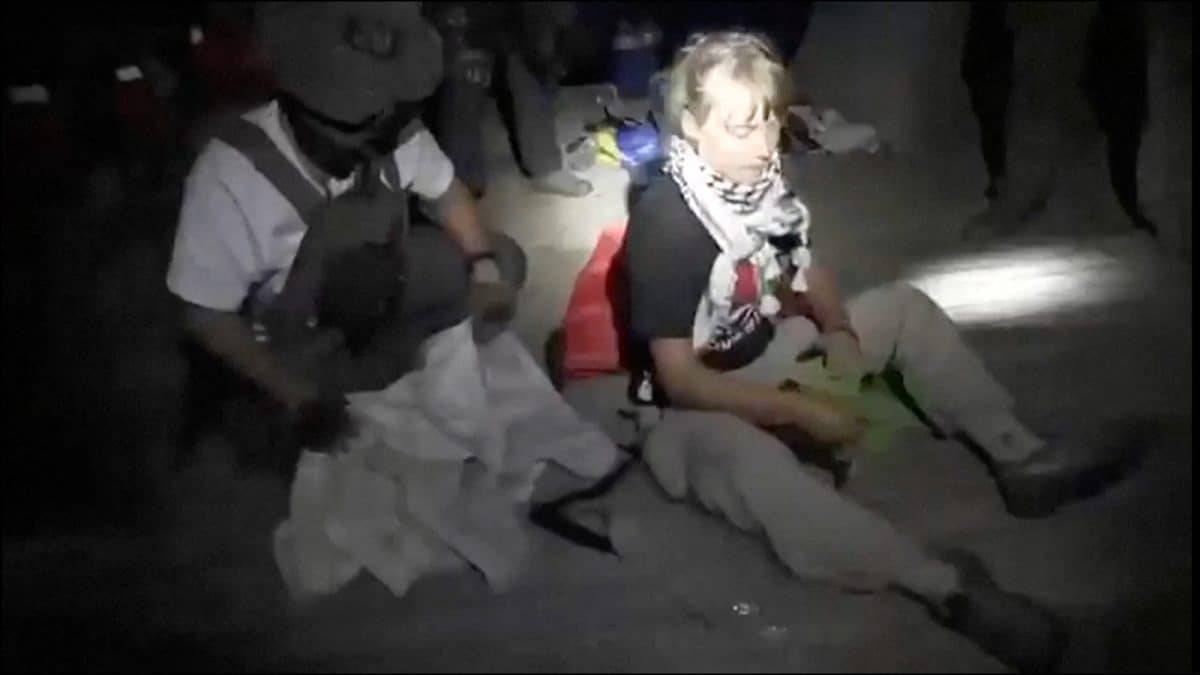French military personnel boarded an oil tanker named on a list of Russian “shadow fleet” vessels, as they suspect it of being the launchpad of mystery drone flights that forced Denmark to close its airspace
As tensions escalate in Europe, French military personnel boarded an oil tanker named on a list of Russian “shadow fleet” vessels, as they suspect it of being the launchpad of mystery drone flights that forced Denmark to close its airspace last week. Stéphane Kellenberger, the public prosecutor in Brest, told Agence France-Presse on Wednesday that two crew members: the ship’s captain and first mate, had been taken into custody.
Kallenberger also noted that an investigation was launched after the crew failed to “justify the nationality of the vessel” and even “refused to cooperate”. Photos circulating online showed navy personnel on the deck of the tanker, known as the Boracay.
As per the French authorities, the vessel has used several names and was one of the Russia-linked ships navigating near the sea of Denmark at the time of the drone sightings, which were on September 22 and 24. The authorities noted that the tanker was sailing from the Russian oil terminal in Primorsk near St Petersburg, carrying 750,000 barrels of crude oil, to Vadinar in India.
On Sunday, it was intercepted by a French naval vessel and was diverted towards Saint-Nazaire in western France while inquiries continue. The vessel was placed under investigation by the French public prosecutor on Wednesday.
France’s President Emmanuel Macron eventually released a statement, describing the whole incident as a “good thing”. Meanwhile, the Kremlin said that it had no information about the tanker or the incident when asked.
From Pushpa to Boracay
According to The Guardian, Boracay, a Benin-flagged tanker, had just changed its name from Pushpa. Under that name, it was monitored sailing west around Denmark last week. Naval experts called it one of a handful of Russia-linked vessels that may have been involved in the drone incidents.
On September 22, Copenhagen airport was closed for four hours in the evening, and Aalborg airport two days later, after drones were sighted in Danish airspace. However, none of the drones were shot down for the safety of the civilians, and the Danish authorities soon pointed fingers at Russia. However, the country’s investigators have not been able to say who is responsible.
One of the lines of inquiry is that the drones – almost certainly larger delta or fixed-wing craft – were launched from a ship or ships near Denmark, giving the country’s military little time to respond. Though the drones’ identity is not known definitively, such drones can be launched from a catapult that could easily be carried on a large ship.
Danish investigators have also identified two other commercial vessels, the Astrol-1 and the Oslo Carrier-3, as sailing in the region at the time, and a Russian warship, the Aleksandr Shabalin, which was filmed by a Danish tabloid from a helicopter south of Langeland, The Guardian reported.
In the midst of all this, Mette Frederiksen, the Danish prime minister, told the media that Europe faced a “hybrid war,” referring to drone incursions over Denmark and Poland during September. “From a European perspective, there is only one country that is willing to threaten us, and it is Russia,” she added.
It is pertinent to note that Copenhagen hosted an EU Summit on Wednesday, where leaders discussed developing a “drone wall” to counter threats, followed by a meeting of the 47-country European Political Community on Thursday. Meanwhile, several European nations have deployed anti-drone defences to help Denmark this week.
With inputs from AFP.
End of Article

)

